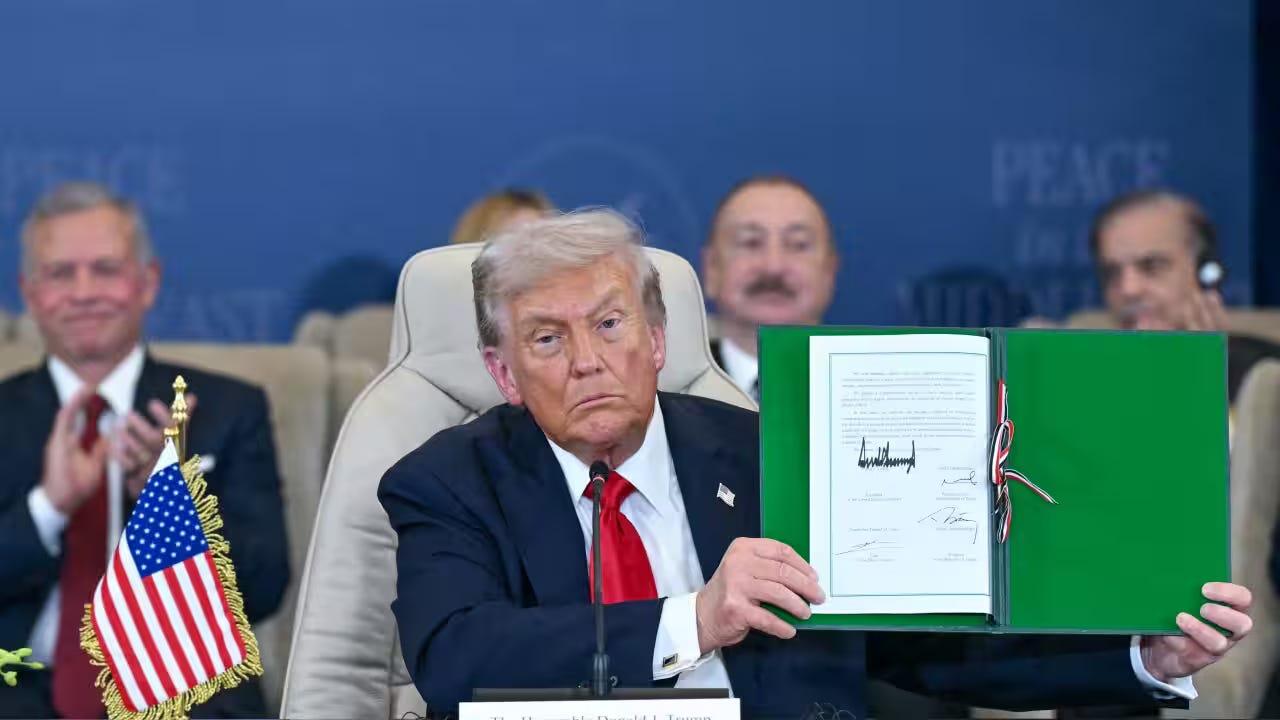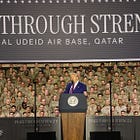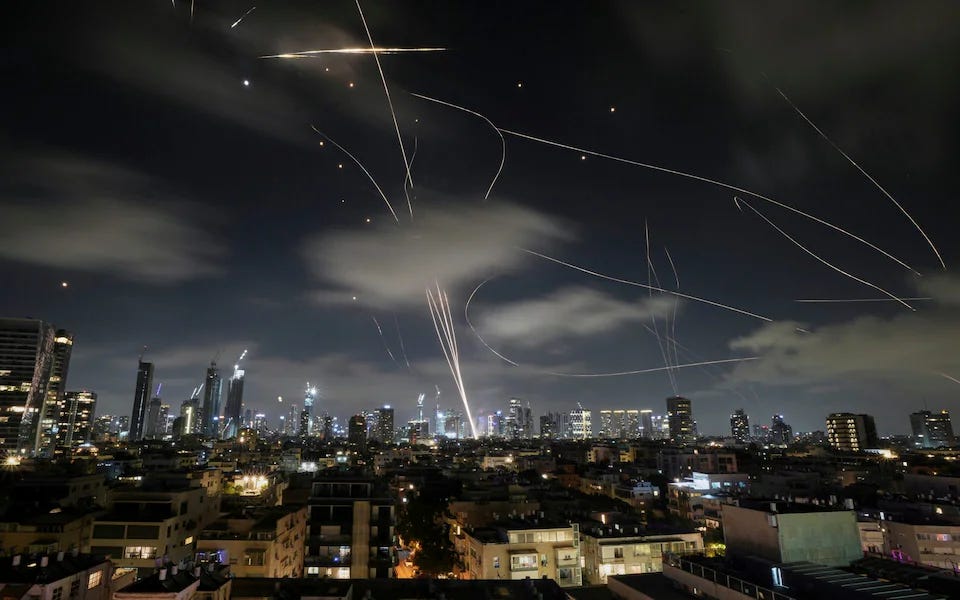Trump's Tectonic Shift in the Middle East is a Nightmare for Putin and Xi
The Gaza deal is disastrous for the West’s enemies, particularly Iran, Russia and China.
by Charles Lipson and Rod D. Martin
October 17, 2025
The most important, and most immediate, consequence of the Gaza deal is how it is likely to prompt a wider accommodation with Israel. Preventing that rapprochement is why Hamas attacked on Oct. 7, 2023, and why Hezbollah (in Lebanon) and the Houthis (in Yemen) immediately joined them, backed by their Iranian masters.
All of them hated Jews, and they hated the Jewish state. But that was hardly new. They passed that venomous hatred down to generations of children. It was the heart of their “educational” curriculum.
So if their hatred is constant, what changed to prompt the attacks on October 7?
The answer was the looming prospect of Saudi Arabia joining the Abraham Accords, partnering with Israel, creating a regional alliance and isolating both the terrorists and Iran. In the months leading up to the attack, the Saudis had repeatedly hinted that they were about to conclude a deal with Israel. They had already encouraged their smaller allies to join the accords to test the local reaction. So far, so good.
But the Islamist regime in Tehran knew that killing over 1,200 Israelis in an unprovoked attack would ensure military retaliation and stall any wider regional bargain as long as the war continued. They knew that taking hostages and holding them would prolong the conflict.
They knew, too, that using Gazan civilians as “protective shields” would ensure thousands of Muslims were killed in the war, no matter how hard Israel tried to avoid those casualties. The civilian deaths and destruction would pose an insurmountable obstacle to regional peace as long as the fighting dragged on. Meanwhile, the fighting would divert attention from Iran’s fundamental strategic goal: building a deliverable nuclear weapon to threaten Israel and perhaps eliminate it entirely.
For almost two years, Iran and its terrorist proxies managed to fulfill their goals. Not that they were successful militarily. They weren’t. First, Israel held off the terror onslaught from Gaza and Southern Lebanon. Then it began to systematically dismantle the “ring of fire”, the terrorist networks Iran established around Israel. After those networks had been crippled and no longer posed a strategic threat, the Jewish state moved on to its main target: Iran and its nuclear program.
Israel managed to destroy much of that program on its own, but some was buried deep underground, beyond the reach of its fighter jets. To take out those deep facilities, Israel needed (and received) help from America with its heavy, penetrating bombs and its huge, stealthy aircraft to deliver them. The combined success of the Israeli and American air forces destroyed Iran’s nuclear facilities and delayed their rebirth for years.
Iran never expected this devastating, comprehensive response, much less its total success. Western critics, too, seemed baffled, convinced by their own tales of Iranian invincibility and Trumpian stupidity. Some claimed Trump had been manipulated into war by Netanyahu, never considering the possibility that it might be Trump — who has repeatedly stated for 15 years that “Iran will never be allowed to have a nuclear bomb” — outsourcing his dirty work to Israel.
That total success not only rolled back the de facto Iranian empire and rendered the “ring of fire” was much weaker, it also left it much poorer. Iran could no longer afford to pay the terrorists or replenish their weapons.
This set the stage for the effective surrender of Hamas (if not their complete disarmament in practice), the end of major fighting in Gaza, and the evisceration of Iran as the region’s most powerful state outside Israel.
The most important regional consequence is that Israel has emerged wholly victorious as the Middle East’s “strong horse”. It has proved to be overwhelmingly powerful, not only militarily but also economically and technologically, in a region that only respects strength. Moreover, it proved beyond doubt that it is willing to use its military force to protect its vital interests (an intentional benefit of Trump’s outsourcing). It is not just a strong horse; it is ready to pull its weight, however costly that might be, and win.
Now that the ceasefire deal has been signed and the hostages returned (all of the living ones; some of the dead), the obvious question is: “What happens next?”
Most commentators have focused, understandably, on the uncertain future of Gaza, on whether Hamas or other terrorist groups there will re-emerge (as they will surely try), and whether “Phase Two” of the peace plan will actually be implemented.
Important as those issues are, they are not the most important ones, locally or globally. What are these dominant geopolitical consequences?






